Chapter 19 - Viruses / CRISPR / Animal Viruses
1/30
There's no tags or description
Looks like no tags are added yet.
Name | Mastery | Learn | Test | Matching | Spaced |
|---|
No study sessions yet.
31 Terms
What is a virus?
An infectious particles that consists of nucleic acid that’ll be packaged in a protein coat. They can’t reproduce or carry out metabolism out of a host cell. Viruses are also much simpler in structure.
What are three basic categories of classification for Viruses?
Type of protein shell, type of nucleic acid, and whether they have a membrane envelope or not
Capsids are made up of…
capsomeres
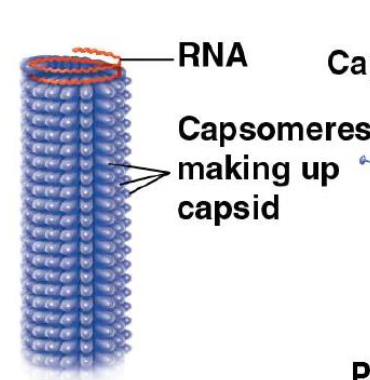
How can you characterize a caspid?
The shape of a viral capsid, rod-shaped, polyhedral, or complexity in shape.
What kind of forms can viral genomes come in?
DNA or RNA
Does the presence of a viral envelope impact a viruses' form?
Yes
What is Host Range?
A limited range of host cells that can be infected.
What are the types of host ranges?
Broad Host Range
What is Broad Host Range?
When a virus can Infect multiple species.
Examples: West Nile and Eastern Equine Encephalitis (EEE) which infect mosquitoes, birds horses, and humans
What is Narrow Host Range?
When viruses can only Infect a single species.
Examples: measlses and polio only infect humans
Viruses can transition between having a broad and ________________?
Narrow Host Range
Viruses are tissue specific.
True.
What are some examples of tissue specific viruses?
Human cold virus - infect only the cells lining the upper respiratory tract
HIV (AIDS virus) - binds to specific receptors on certain types of white blood (immune) cells
What’s the general process of viruses infecting individuals
The viral genome enters the host cell in a variety of ways.
Once the viral genome is in the cell, the cell begins to manufacture viral proteins
The virus uses host enzymes (RNA polymerases), ribosomes, tRNAs, amino acids, ATP, and other molecules to perform replication and transcription.
Once everything is copied and assembled, they will spontaneously self-assemble into new viruses and exit the cell.
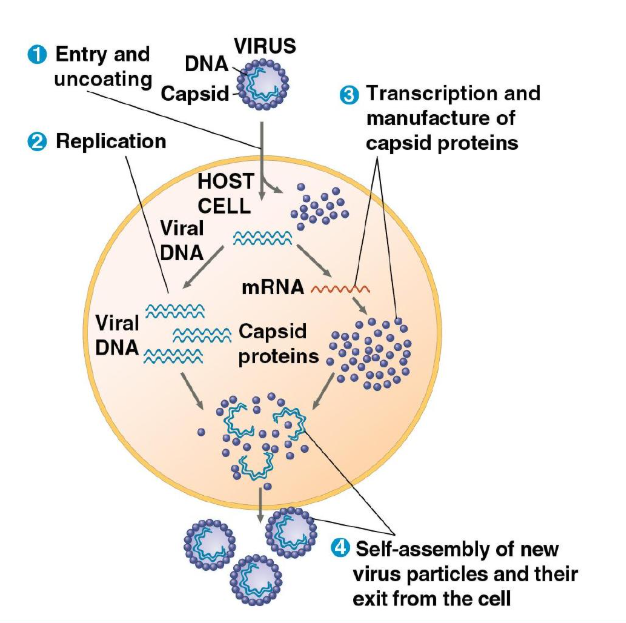
What are the two steps to
What is the step “recognition of host”?
Viruses reocgnize host by “matching” proteins on their surface,
It’ll be brought into the cell and the viral genome can take over.
Bacterphases will use the tail to pierce the cell wall and inject the cell.
What are the general types of viruses?
Viruses that only attack bacteria, fungi, plants, and animals. All organisms are susceptible to viruses of some kind.
What are bacteriophages?
Viruses that infect bacteria.
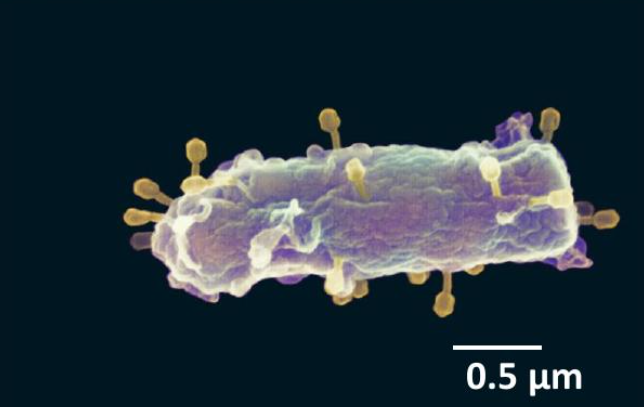
What are the two categories of Bacteriophages?
Virulent phages and temperate phages.
Virulent Phages are…
Bacteriophages that can only produce via lytic cycle
Temperate phages are…
Bacteriophages that are capable of both lytic and lysogenic cycle.
What is the Lytic Cycle?
(We have an infection, replication, and new phages. The new phages lyse open the cell and begin to infect other bacteria)
A phage replicative cycle that culminates in the death of the host cell.
The lytic cycle produces new phages and lyses (breaks open) the host’s cell wall, releasing the progeny viruses.
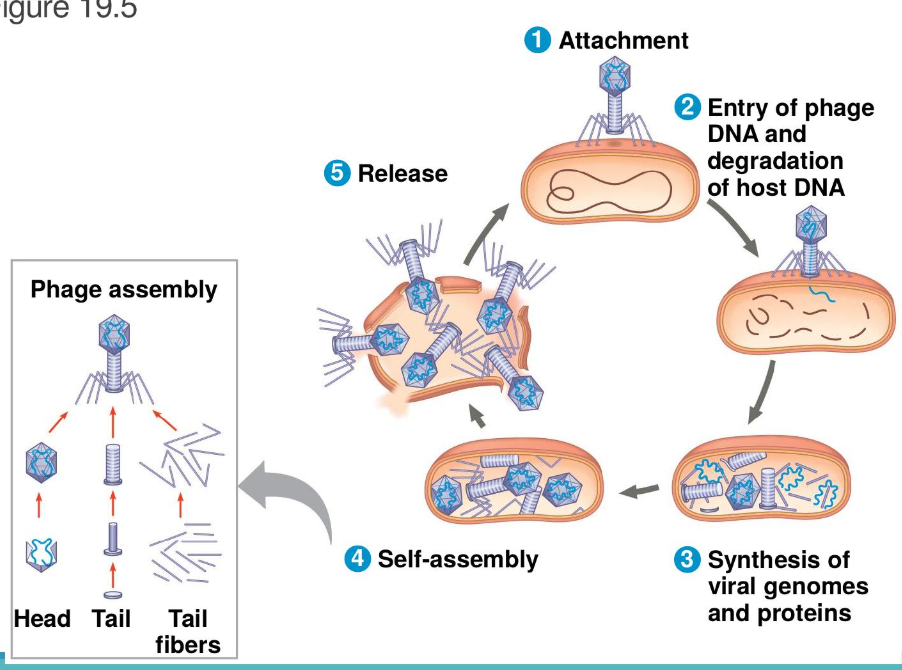
What is the Lysogenic cycle?
General: Replicates the phage genome without destroying the host.
Phage will be incorporated into the host cell’s chromosome every time the cell replicates and divides, now called a Prophage. (Passing onto the daughter cells) It’ll save it’s time until it’s environmental conditions are good, so it can trigger the virus genome, exiting the bacterial chromosome and inducing Lytic cycle.
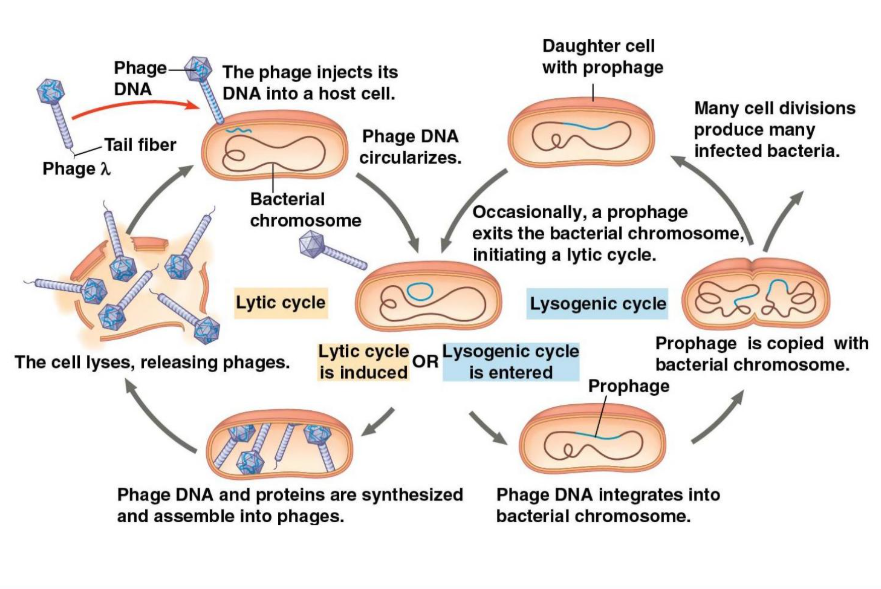
In some cases, prophages can cause the host bacteria to ___________.
make toxins.
What are some ways to defend against the phage?
Natural selection favors bacteria mutants where receptor proteins no longer recognize viral surface proteins.
Restriction enzymes in bacteria chop up phage DNA.
CRISPR-Cas system (clustered Regularly Interspaced Short Palindromic Repeats) is a type of “immune” system for bacteria
How does the CRISPR-Cas system work?
Recognizes and lyse the cell before it can replicate.
A system in prokaryotes, bacteria, and archaea
Is CRISPR universal?
Yes, it’s universal.
What are the steps to using CRISPR in others?
Design a guide RNA that’s complementary to the sequence you wanna target
Insert guide RNA and Cas protein in the cell
Cas9 cuts at specific place in DNA
Cell’s own mechanisms repairs the double stranded break
Re
Non-homologous End Joining:
Homology Directed Repair:
What are key characteristics to classify viruses that infect animals?
RNA or DNA genom